

Guyana Offshore

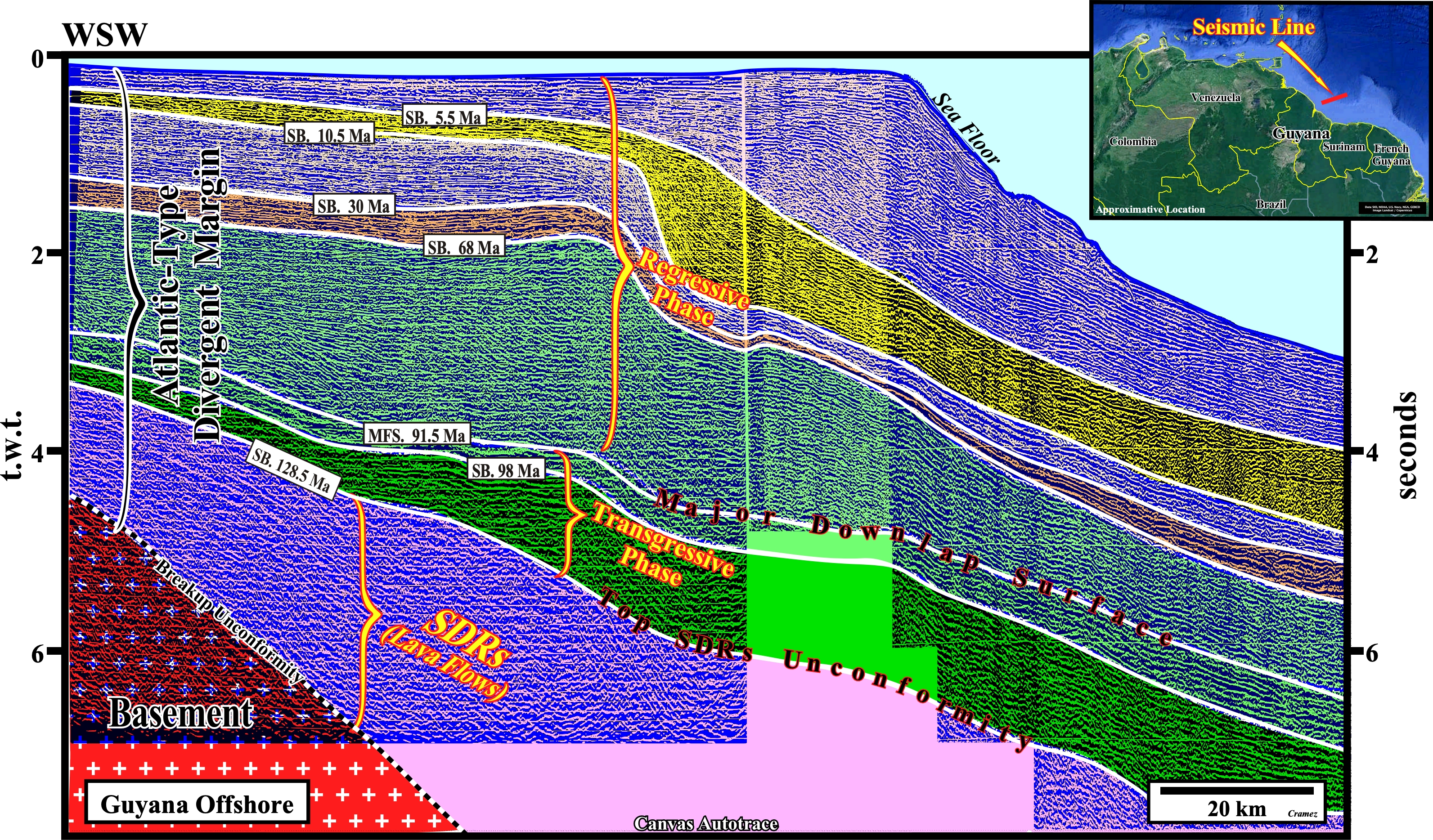
On this Canvas autotrace of a composite seismic line of the Guyana offshore, we find all geological features characterizing the the opening of South Atlantic except the evidence of rift-type basins developed during the lengthening of the Gondwana continental crust. Above the breakup unconformity, which marks the individualization of the South America and Africa continents, a thick wedge of SDRs (post-breakup lava-flows) was formed before the first marine ingression (the ages are depicted in Ma) that marks the onset of the clastic sector of the Atlantic-type divergent margin. The transgressive phase of the post-Pangea continental encroachment cycle ends by a maximum flooding surface, which progressively fossilized by the deposition of the regressive phase transforming it into a major downlap surface. The deposition of the Atlantic-type margin is associated with the second Phanerozoic 1st order eustatic cycle. During the transgressive phase, characterized by a retrogradational geometry, the absolute sea level rise, while during the regressive phase, which is characterized by a progradational geometry, the absolute sea level falls. In other words, during the transgressive phase the basin has generally a shelf (the shoreline is far away up-dip of the shelf break), i.e, the geological conditions are of highstand. Contrariwise, during the regressive phase, generally, the basin has no shelf (the shoreline is, more or less, coincident with the shelf break), that is to say, the lowstand geological conditions, in which the sea level is below the basin edge, are predominant. It is during the lowstand geological condition that turbidite deposits occur, which can form attractive reservoir-entrapment petroleum subsystems as illustrated in next autotraces.
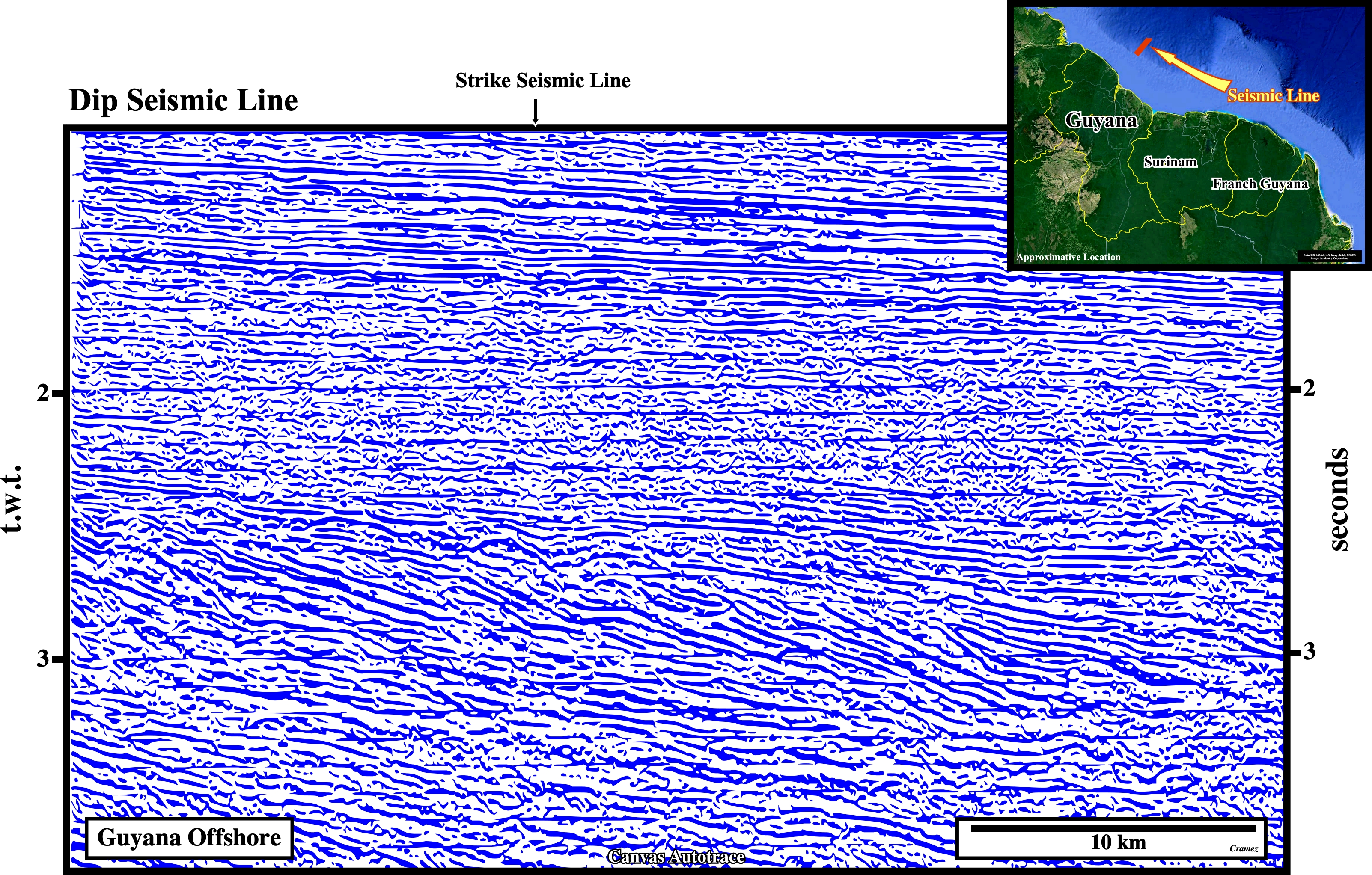
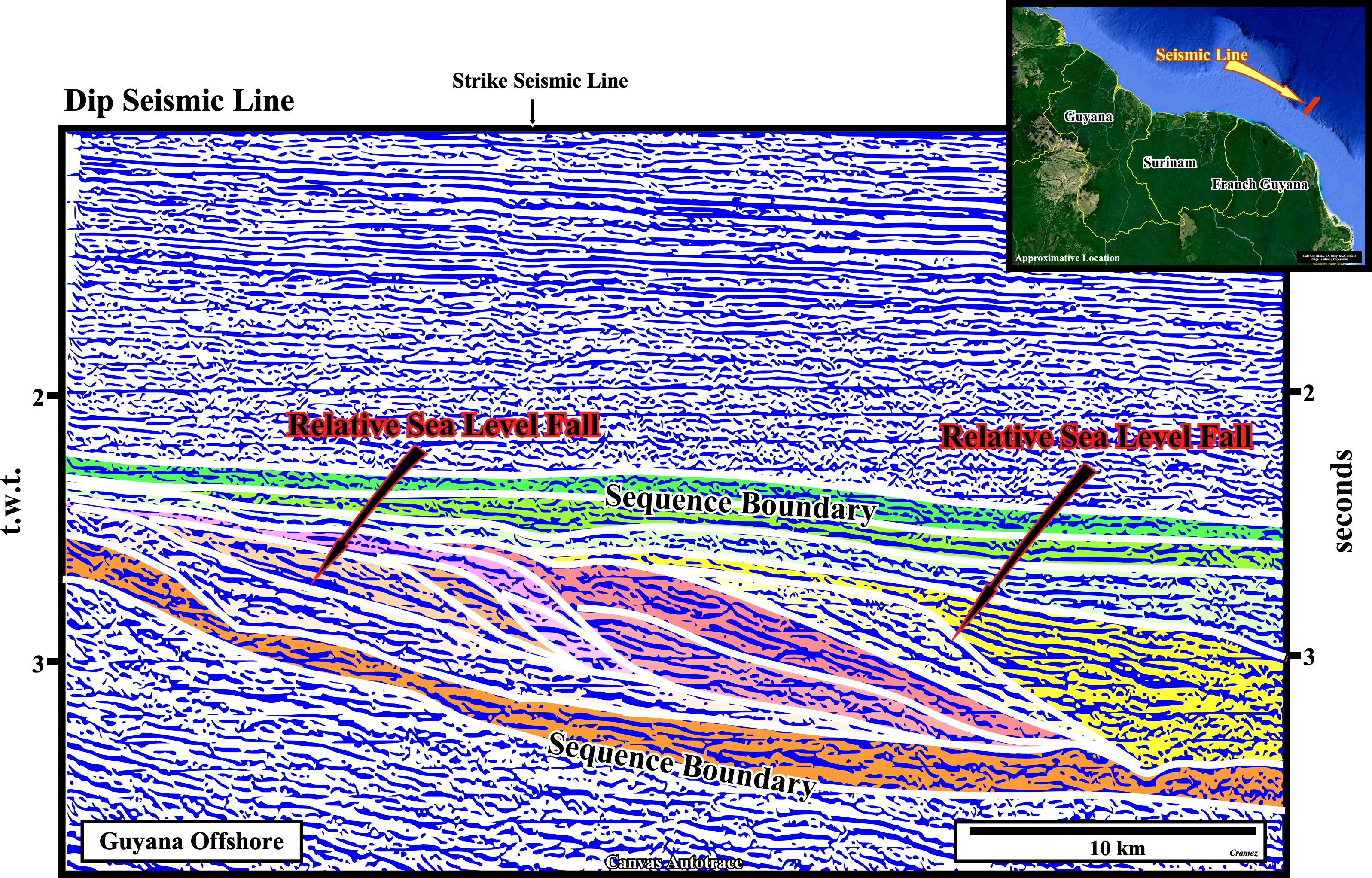
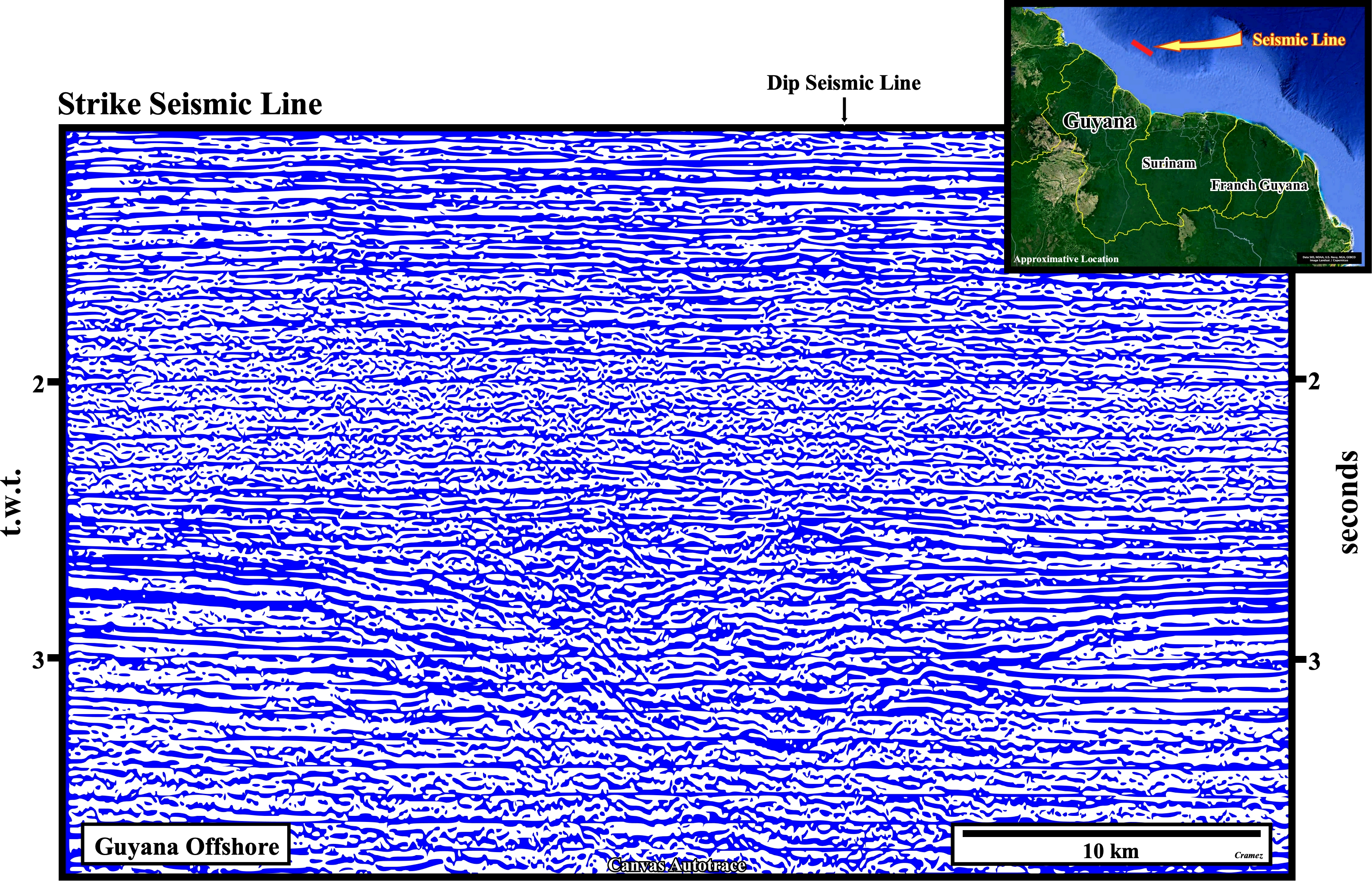
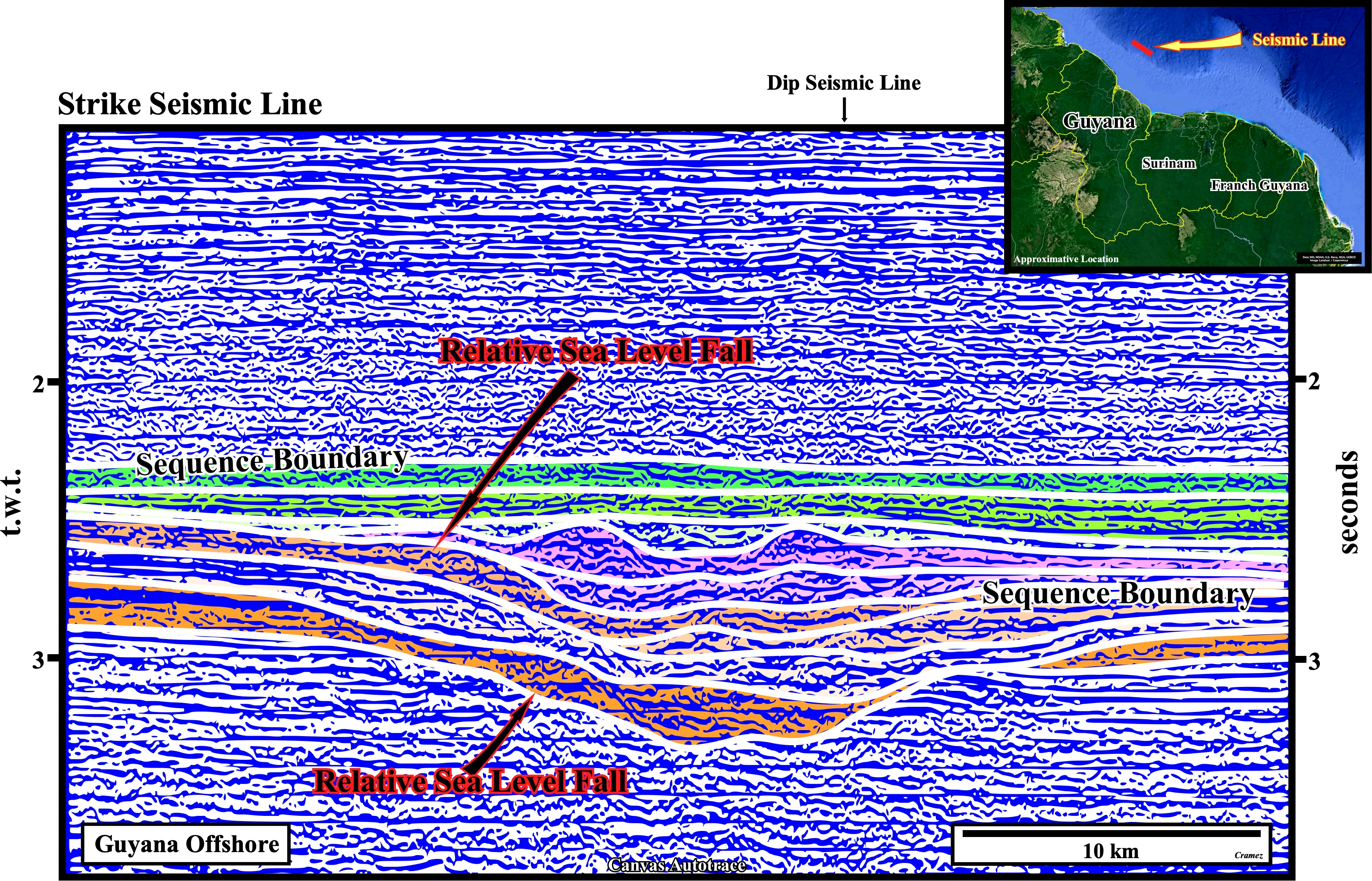
On these Canvas autotraces of two orthogonal seismic lines of Guyana offshore, we can see that in the regressive phase of the post-Pangea continental encroachment cycle even the canyons, probably, the feeder of the submarine turbidite fans (slope and basin), developed in association with significant relative sea level falls, i.e., with unconformities (sequence boundaries, at least, in sequential stratigraphy), The filling of the turbidite deposits is progradational, which, in certain cases, can form potential reservoir-entrapment petroleum sub-systems.
Send E-mails to carlos.cramez@bluewin.ch with comments and suggestions to improve this atlas.
Copyright © 2001 CCramez
Last update:
2022